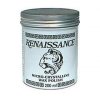Alan Davis Knives
Knife Maker
- Joined
- Jun 28, 2010
- Messages
- 2,249
overall length - 6"
blade - 2 9/16" tip to scales
scales - jade g10
steel - Alabama Damascus (contains 52100, 5160, 15n20 and 203e)
grind - hollow 8" wheel
liners & thumb stud - anodized & textured titanium
standoff & screws - anodized titanium
After I finish a knife I spray it with Rem Oil which is what caused the color variation in the scales. I started to add some thin spacers between the scales and liners to make the color more even but my son suggested I leave it since it sort of changes the look every time you spray it down.
Bearing pivot for a fast and smooth operation. Strong detent, strong secure lock up and zero blade play in any direction.
(sold) $285.00 + $10 shipping in the US, international extra. Paypal, money order and most other forms of payment.
Thanks for looking, Alan

jade & dam. pocket carry 010 by alanknifemaker, on Flickr

jade & dam. pocket carry 016 by alanknifemaker, on Flickr

jade & dam. pocket carry 018 by alanknifemaker, on Flickr

jade & dam. pocket carry 007 by alanknifemaker, on Flickr

jade & dam. pocket carry 003 by alanknifemaker, on Flickr

jade & dam. pocket carry 006 by alanknifemaker, on Flickr
Texture Tech & Damascus Folder
overall length - 7 5/8"
blade - 3 5/16" tip to scales x 15/16" high x 1/8" thick
scales - Reticulated TextureTech, CP Titanium
steel - Zoe Crist 1095 & 15n20 carbon Damascus (Explosion Pattern)
grind - hollow 8" wheel
liners and thumb stud - anodized titanium
weight - 4 oz.
Bearing pivot for a fast and smooth operation. Strong detent, strong secure lock up and zero blade play in any direction.
(Sold)$425.00 shipped in the US, international extra. Paypal, money order and most other forms of payment.
This one did not sell the first time around so I re-anodized it to tone it down a bit.
Thanks for looking, Alan

texture tech folder 014 by alanknifemaker, on Flickr

texture tech folder 017 by alanknifemaker, on Flickr

texture tech folder 020 by alanknifemaker, on Flickr

texture tech folder 010 by alanknifemaker, on Flickr

texture tech folder 005 by alanknifemaker, on Flickr

texture tech folder 002 by alanknifemaker, on Flickr

texture tech folder 004 by alanknifemaker, on Flickr
blade - 2 9/16" tip to scales
scales - jade g10
steel - Alabama Damascus (contains 52100, 5160, 15n20 and 203e)
grind - hollow 8" wheel
liners & thumb stud - anodized & textured titanium
standoff & screws - anodized titanium
After I finish a knife I spray it with Rem Oil which is what caused the color variation in the scales. I started to add some thin spacers between the scales and liners to make the color more even but my son suggested I leave it since it sort of changes the look every time you spray it down.
Bearing pivot for a fast and smooth operation. Strong detent, strong secure lock up and zero blade play in any direction.
(sold) $285.00 + $10 shipping in the US, international extra. Paypal, money order and most other forms of payment.
Thanks for looking, Alan

jade & dam. pocket carry 010 by alanknifemaker, on Flickr

jade & dam. pocket carry 016 by alanknifemaker, on Flickr

jade & dam. pocket carry 018 by alanknifemaker, on Flickr

jade & dam. pocket carry 007 by alanknifemaker, on Flickr

jade & dam. pocket carry 003 by alanknifemaker, on Flickr

jade & dam. pocket carry 006 by alanknifemaker, on Flickr
Texture Tech & Damascus Folder
overall length - 7 5/8"
blade - 3 5/16" tip to scales x 15/16" high x 1/8" thick
scales - Reticulated TextureTech, CP Titanium
steel - Zoe Crist 1095 & 15n20 carbon Damascus (Explosion Pattern)
grind - hollow 8" wheel
liners and thumb stud - anodized titanium
weight - 4 oz.
Bearing pivot for a fast and smooth operation. Strong detent, strong secure lock up and zero blade play in any direction.
(Sold)$425.00 shipped in the US, international extra. Paypal, money order and most other forms of payment.
This one did not sell the first time around so I re-anodized it to tone it down a bit.
Thanks for looking, Alan

texture tech folder 014 by alanknifemaker, on Flickr

texture tech folder 017 by alanknifemaker, on Flickr

texture tech folder 020 by alanknifemaker, on Flickr

texture tech folder 010 by alanknifemaker, on Flickr

texture tech folder 005 by alanknifemaker, on Flickr

texture tech folder 002 by alanknifemaker, on Flickr

texture tech folder 004 by alanknifemaker, on Flickr
Last edited:

